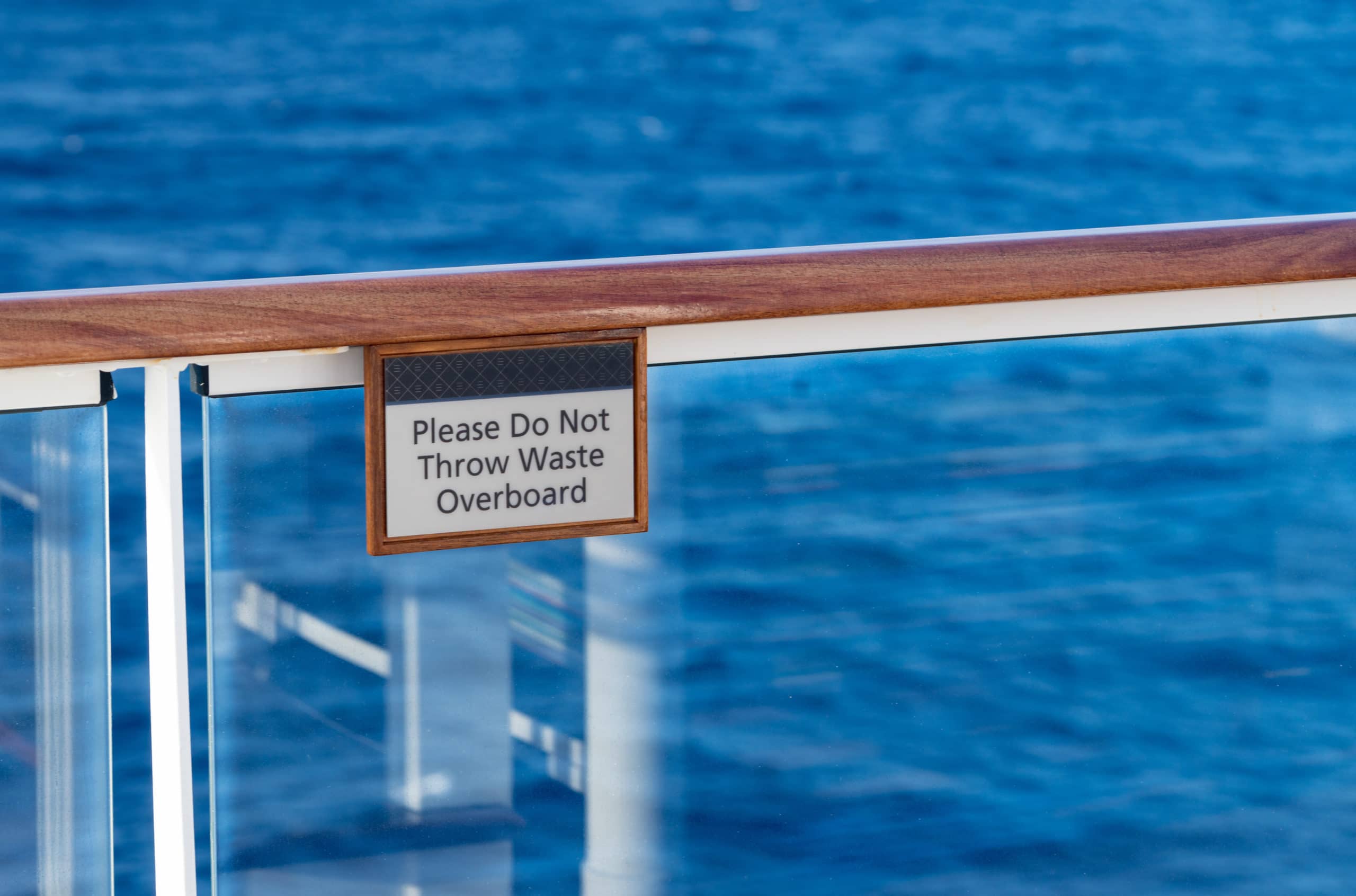- Blog
- Oceans
- Cruise Ships
- Where Do Cruise Ships Dump Their Waste?
Where Do Cruise Ships Dump Their Waste?

Donate Now!
Your contribution will benefit Friends of the Earth.
Stay Informed
Thanks for your interest in Friends of the Earth. You can find information about us and get in touch the following ways:
Cruise ships entertain thousands of passengers and are staffed by a substantial crew. And with all those people aboard, a looming question remains: what happens with all the waste from cruise ships?
If you guessed a large portion of it ends up in the oceans, you’d be correct. Sadly, U.S. laws do not do enough to protect our bodies of water. It allows cruise ships to dump waste into the ocean as long as the ships are more than three and a half miles offshore. That means that dirty water from sinks and showers and laundry facilities are discharged into the water. It means that waste from toilets is discharged into the water. And it also means that food waste is also dumped into the ocean.
Guess who doesn’t have a say in the matter? The oceanic wildlife that call the oceans their home.
Commonly Asked Questions about Cruise Ship Waste
We’ve put together some of the most frequently asked questions about cruise ship waste to help illustrate the pollution these floating cities cause.
Do Cruise Ships Pollute the Ocean?
Yes. Cruise ships pollute the ocean. Cruise ships not only dump sewage and food waste, but they also dump harmful fuel waste into the oceans as well.
Cruise ships often use cheap, dirty, heavy fuel to power their engines. And their smokestacks must be cleaned to remove the harmful elements from the exhaust. So cruise ships have implemented using scrubbers to “clean” their dirty fuel air emissions. This allows the cruise liners to continue to burn cheaper, more harmful fuel. And the water used in the “scrubber” process is then discharged into the ocean adding more pollution to the already polluted waters. These scrubbers emit acidic wastewater that is warmer than ambient sea water and contains heavy metals, polycyclic aromatic hydrocarbons (PAHs), suspended particulate matter, and nitrates, all of which are harmful to the marine environment.
Do Cruise Ships Dump Sewage?
Yes. To get into a few more specifics than above, the U.S. allows cruise ships to dump treated waste into the ocean if they are within three and a half miles from shore. Beyond that point, there are no restrictions for dumping untreated, raw sewage in U.S. ocean waters. There are a few places like Puget Sound, California, and most of New England where no-dumping zones have been created but everywhere else, sewage can be dumped.
How Much Sewage Do Cruise Ships Dump?
More than a billion gallons of sewage are dumped into the ocean annually. This sewage is not only full of human waste, but also chemicals, pharmaceuticals, bacteria, viruses, heavy metals, and hazardous waste. And many cruise ships lack the sewage treatment facilities to adequately filter out toxins.
The increased waste in the ocean adds to the problem of pollution and oxygen depletion in the waters. Added nitrogen and phosphorus allow for algae blooms — which can suffocate coral reefs, manatees, shellfish, and fish.
Help power change. It takes support from environmental champions like you to build a more healthy and just world. Donate now!
Do Cruise Ships Dump Trash in the Ocean?
Cruise ships are not legally allowed to dump trash in the oceans. Garbage is to be separated as effectively as possible.
Some cruise lines have begun recycling their plastic, cardboard, and glass, which is sorted and stored until they reach the next port to offload. Some non-recyclable products are compacted and placed on pallets to be offloaded as well. However, some trash may be incinerated — which doesn’t pollute the ocean but does pollute the air. The trash that is burnt releases mercury, lead, and carbon dioxide which is harmful to human health.
It’s important to note that there are cruise ships that have been caught discarding trash into the ocean – which is illegal and increases plastic pollution that can choke and kill marine wildlife.
Do Cruise Ships Dump Food Waste in the Ocean?
Yes. Food waste is discharged in the ocean. When food has been prepared but goes uneaten, it is ground up and mixed with water until it is liquified by an industrial grinder. This food mixture is typically pumped out of the ship while at sea.
Cruise ships have an estimated food waste around 30% — and they often call the liquified waste disposal “fish food.” Unsurprisingly, the food served on a cruise ship is not typically part of a fish’s natural diet.
Our fruits and vegetables are often treated with pesticides and our meats and proteins are generally treated with antibiotics and hormones — which again are not typically part of a fish’s diet.
The accumulation of the chemicals from human food is then released into the ocean and consumed by fish and other marine wildlife. Bioaccumulation (the accumulation of a contaminant in an organism from diet air, and water) can happen because the organism’s body cannot break down or expel the chemical. These chemicals then move up the food chain and can reach dangerous levels in both fish and other wildlife.
Additionally, this added food waste can disrupt balance of the predator and prey chain.
Cruise Ships Pollute the Ocean
Cruise ships dumping waste in the ocean is just the beginning of the ways that cruise ships pollute the planet. They are bad for the environment as they increase ocean noise, increase air and water pollution, and spread bacteria and viruses. But cruises are a billion-dollar business and keep continuing with their polluting ways.
Before you take a cruise, consider green travel options instead — or take a look at Friends of the Earth’s Cruise Ship Report Card to see which cruise lines you should adamantly avoid.
